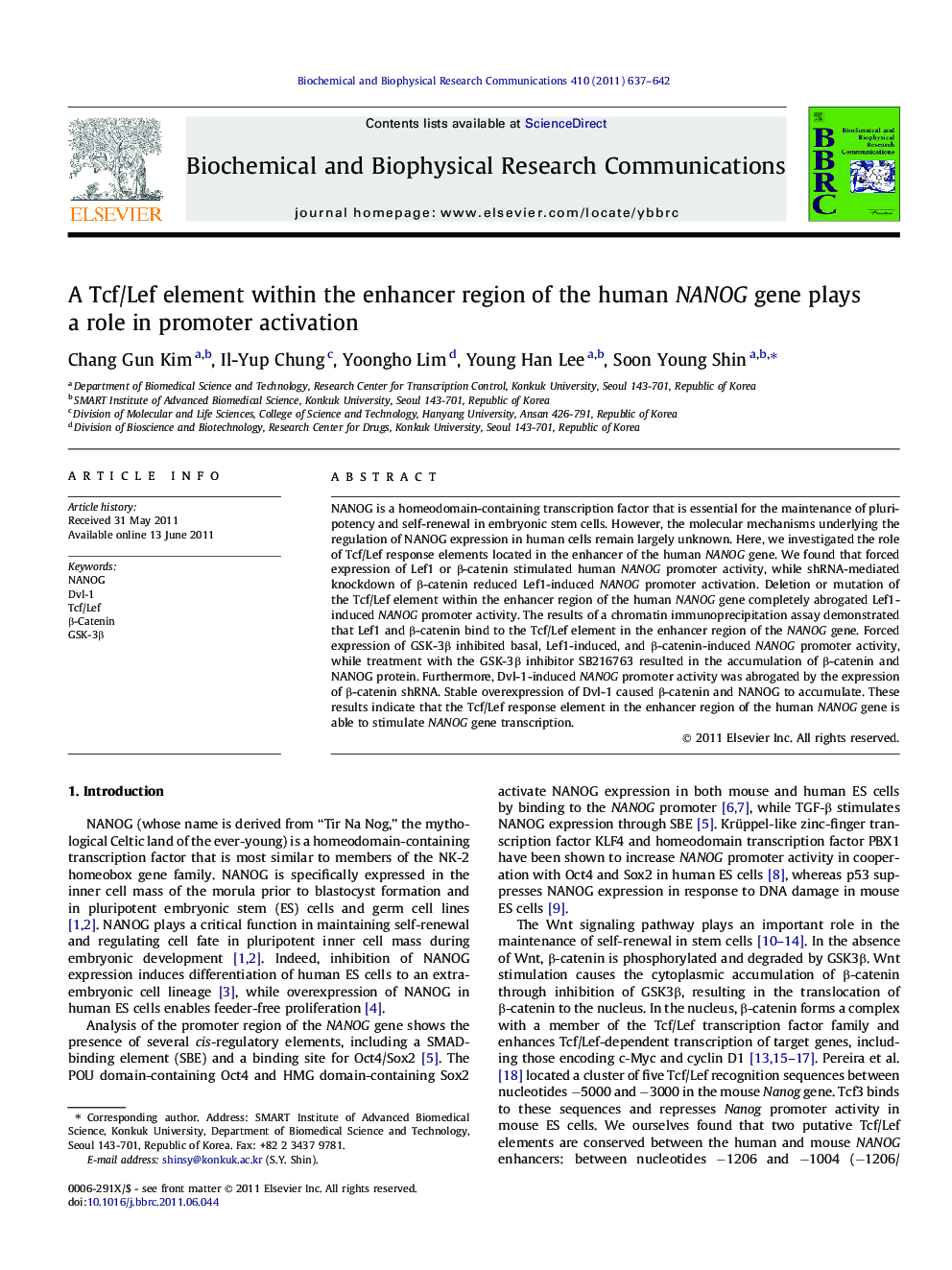| Article ID | Journal | Published Year | Pages | File Type |
|---|---|---|---|---|
| 1930547 | Biochemical and Biophysical Research Communications | 2011 | 6 Pages |
NANOG is a homeodomain-containing transcription factor that is essential for the maintenance of pluripotency and self-renewal in embryonic stem cells. However, the molecular mechanisms underlying the regulation of NANOG expression in human cells remain largely unknown. Here, we investigated the role of Tcf/Lef response elements located in the enhancer of the human NANOG gene. We found that forced expression of Lef1 or β-catenin stimulated human NANOG promoter activity, while shRNA-mediated knockdown of β-catenin reduced Lef1-induced NANOG promoter activation. Deletion or mutation of the Tcf/Lef element within the enhancer region of the human NANOG gene completely abrogated Lef1-induced NANOG promoter activity. The results of a chromatin immunoprecipitation assay demonstrated that Lef1 and β-catenin bind to the Tcf/Lef element in the enhancer region of the NANOG gene. Forced expression of GSK-3β inhibited basal, Lef1-induced, and β-catenin-induced NANOG promoter activity, while treatment with the GSK-3β inhibitor SB216763 resulted in the accumulation of β-catenin and NANOG protein. Furthermore, Dvl-1-induced NANOG promoter activity was abrogated by the expression of β-catenin shRNA. Stable overexpression of Dvl-1 caused β-catenin and NANOG to accumulate. These results indicate that the Tcf/Lef response element in the enhancer region of the human NANOG gene is able to stimulate NANOG gene transcription.
► Forced expression of Lef1 or β-catenin stimulated human NANOG promoter activity. ► shRNA-mediated knockdown of β-catenin reduced Lef1-induced NANOG promoter activation. ► Mutation of the Tcf/Lef element completely abrogated Lef1-induced NANOG promoter activity. ► Tcf/Lef element in the human NANOG gene is able to stimulate NANOG gene transcription.
